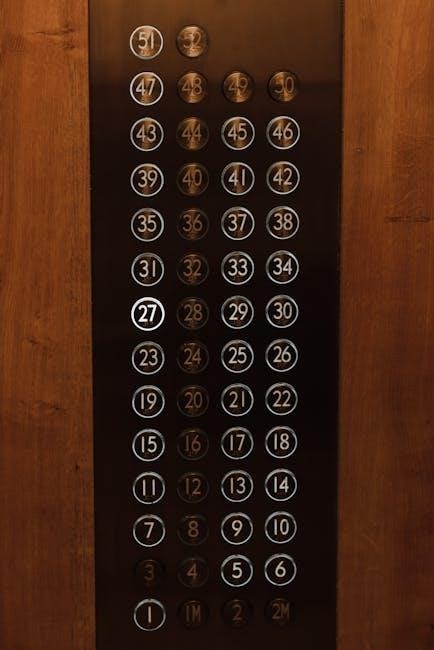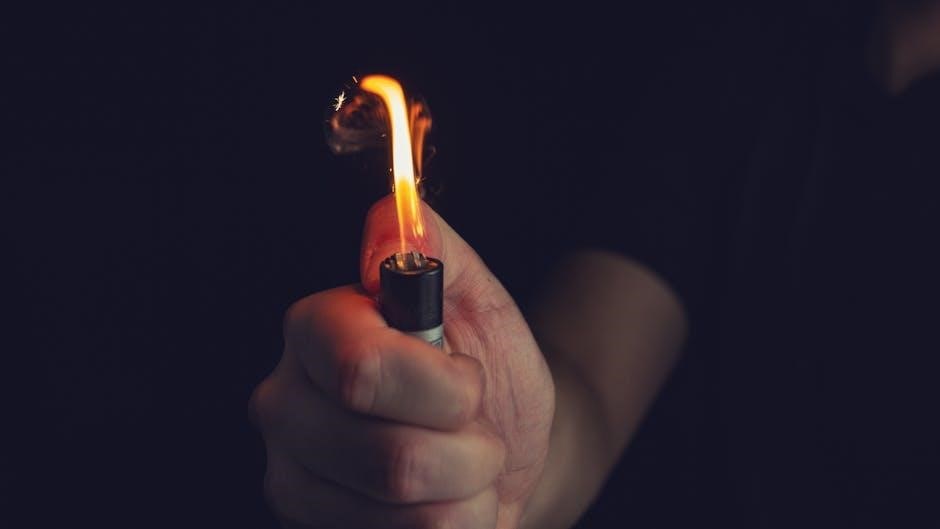balboa hot tub controls 4 button manual
Balboa Hot Tub Controls 4 Button Manual: An In-Depth Guide
This guide offers a comprehensive overview of Balboa’s popular 4-button hot tub control panels. Precise identification is crucial for effective troubleshooting and maintenance. Understand how to operate and maintain your hot tub controls, ensuring proper usage and longevity.
Understanding Balboa Control Systems
Balboa control systems are the brains behind numerous hot tubs, providing essential functions for operation. Even if Balboa doesn’t manufacture entire hot tubs, they create nearly every component, including the insulating foam. These systems regulate heating, filtration, jet operation, and lighting, all vital for a relaxing experience.
Understanding these systems is critical for effective maintenance and troubleshooting. Balboa systems employ sensors and software for precise control without needing to consider the water’s flow direction through the heater. These controls are generally universal across U.S.-manufactured hot tubs, simplifying the learning curve.

However, it’s important to note that Balboa Water Group does not authorize repairs or services by unqualified users. Attempting to repair or service a Balboa product without proper training could potentially lead to damage or safety hazards.
Familiarize yourself with the components and functions to optimize hot tub performance. This knowledge will empower you to address common issues and ensure your hot tub remains a source of relaxation for years to come. Always consult the Balboa User Guide for full operational details.
Identifying Your Specific Balboa 4-Button Control Panel
Accurately identifying your specific Balboa 4-button control panel is the first crucial step for effective troubleshooting and maintenance. Balboa offers a variety of 4-button panels, each with slight variations in button layout, labeling, and menu options. These differences, though seemingly minor, can significantly impact how you navigate the system and resolve potential issues.
Begin by carefully examining the control panel itself. Note the exact arrangement of the four buttons. Are they in a row, a square, or another configuration? Pay close attention to the labels associated with each button. Common labels include “Temp,” “Jets,” “Light,” “Mode,” or symbols representing these functions.
Next, locate the model number of your control panel. This information is typically found on a sticker located on the back of the panel or inside the spa pack enclosure. Once you have the model number, you can consult your hot tub’s user manual or search online for specific documentation related to your panel.
Utilizing online resources and manuals will allow you to find detailed information on button functions, menu navigation, and troubleshooting procedures specific to your particular Balboa 4-button control panel.
Common Button Functions and Operations
Understanding the common functions of the four buttons on a Balboa control panel is essential for operating your hot tub effectively. Although button labels may vary slightly depending on the specific model, some functions are generally consistent across different panels.
The “Temp” button, or a button with a thermometer icon, typically controls the water temperature setting. Pressing this button usually allows you to increase or decrease the desired temperature, often displayed on the control panel screen. The “Jets” button activates or deactivates the various jet pumps in your hot tub, controlling the water flow and massage intensity.
The “Light” button, usually marked with a lightbulb icon, turns the hot tub’s underwater light on or off, enhancing the ambiance and visibility. The “Mode” button, or a button with a symbol representing settings, often allows you to navigate through different operating modes, such as standard, economy, or sleep mode.
Each mode has its own energy-saving features. Familiarizing yourself with these common button functions and their specific operations on your panel will enable you to easily adjust your hot tub’s settings and enjoy a customized spa experience.
Navigating the Control Panel Menu
Navigating the control panel menu on your Balboa system is crucial for customizing your hot tub experience and troubleshooting potential issues. Balboa control panels feature intuitive menus for managing settings and troubleshooting. While the specific menu structure can vary depending on the model, the basic principles remain consistent.
Typically, the “Mode” button allows you to access the main menu. Pressing it repeatedly cycles through the available options, such as temperature settings, filter cycles, and diagnostic information. Once you’ve reached the desired menu option, use the “Temp” button to adjust the settings or enter a submenu. The “Jets” or “Light” buttons may also be used for navigation, depending on the specific menu layout.
Pay attention to the display screen, which provides valuable information about the current settings and available options. Some models also feature shortcut buttons for frequently accessed functions, streamlining the navigation process. Familiarize yourself with the menu structure and available settings to optimize your hot tub’s performance and tailor it to your preferences. Consult your Balboa User Guide for full details on the operation of the Control Panel.
Basic Troubleshooting Steps for Balboa Hot Tubs
When issues arise with your Balboa hot tub, initiating basic troubleshooting steps can often resolve the problem, saving time and potential repair costs. First, always ensure the hot tub is properly powered and the control panel is receiving electricity. Check the circuit breaker or GFCI to confirm it hasn’t tripped.
Next, examine the water level. Low water levels can trigger error messages or prevent the heater from functioning correctly. Ensure the water is at the recommended level, typically above the skimmer.
Inspect the filter for dirt and debris. A clogged filter restricts water flow, leading to heater problems and error codes. Clean or replace the filter as needed.
Check the jets and suction fittings for blockages. Remove any obstructions that may be hindering water circulation.
If the hot tub is displaying an error message, consult your Balboa control panel manual for a detailed explanation and troubleshooting steps. Many Balboa panels feature intuitive menus for navigating settings and troubleshooting.
If these basic steps don’t resolve the issue, more advanced troubleshooting may be required. Remember safety first, always disconnect the power before attempting any repairs.
Decoding Common Error Messages (e.g., FLO, OH)
Understanding error messages displayed on your Balboa hot tub control panel is crucial for effective troubleshooting. These codes provide valuable insights into potential issues affecting your spa’s operation. Let’s examine some common error messages and their meanings.
The “FLO,” “FL1,” or “FL2” error indicates a problem with water flow through the heater. This often suggests a blocked filter, low water level, closed valve, or a malfunctioning circulation pump. Addressing the underlying cause of the flow restriction is essential to resolve this error.
The “OH” error signifies an overheat condition within the hot tub. This can be caused by a faulty thermostat, a malfunctioning heater, or inadequate water circulation. Promptly addressing this error is vital to prevent damage to the spa’s components.
Other common error messages include “Sn,” indicating a sensor malfunction, and “dr,” suggesting a temperature drop. Consulting your Balboa user guide is crucial for a comprehensive understanding of all error codes specific to your control system.
Remember, error codes are merely indicators; identifying the root cause of the problem is key to implementing the appropriate solution.
Troubleshooting Flow-Related Issues (FLO/FL1/FL2 Errors)
The dreaded “FLO,” “FL1,” or “FL2” errors on your Balboa hot tub control panel signal a disruption in water flow, preventing the heater from functioning correctly. These errors often stem from several common causes, each requiring a specific troubleshooting approach.
First, inspect the filter. A dirty or clogged filter restricts water flow, triggering the error. Cleaning or replacing the filter is a simple first step.
Next, check the water level. Insufficient water prevents proper circulation. Ensure the water level is above the skimmer and jets.

Examine the jets. Too many closed jets can impede water flow. Open several jets to improve circulation.
Inspect the suction fittings. Blocked suction fittings restrict water intake. Clear any debris obstructing the flow.
Verify the slice valves. Closed or partially closed valves can restrict flow. Ensure they are fully open.
Finally, assess the circulation pump. A malfunctioning or failing pump cannot maintain adequate water flow. Listen for unusual noises or vibrations.
If these steps don’t resolve the issue, consult a professional technician to diagnose potential pump or sensor problems. Addressing the root cause of the flow restriction is essential for restoring proper hot tub operation.
GFCI Tripping Issues: Causes and Solutions
A Ground Fault Circuit Interrupter (GFCI) is a safety device designed to protect against electrical shock. If your hot tub’s GFCI is tripping, it indicates an electrical fault that needs immediate attention.
One common cause is moisture intrusion. Water can create a path to ground, causing the GFCI to trip. Inspect all connections and components for signs of water damage.
Faulty components, such as the heater, pump, or control panel, can also cause GFCI tripping. Disconnecting components one by one can help isolate the problem.
A damaged power cord or wiring can create a ground fault. Carefully inspect the cord for cuts, abrasions, or exposed wires.
Overloading the circuit can also trip the GFCI. Ensure that the hot tub is the only appliance on the circuit.
Loose connections can cause arcing, leading to GFCI tripping. Tighten all electrical connections.
A weak or defective GFCI breaker can also be the culprit. Test the GFCI breaker with a known good load.
If troubleshooting doesn’t resolve the issue, consult a qualified electrician. Electrical problems can be dangerous and require professional expertise.
Remember to always disconnect power before inspecting any electrical components. Safety is paramount when dealing with electricity and water.
Heater Problems and Troubleshooting
A malfunctioning heater can disrupt your hot tub experience. Several issues can cause heater problems, including mineral buildup, faulty sensors, and component failures.
Mineral buildup on the heating element reduces its efficiency. Clean the element regularly with a descaling solution.
Faulty temperature sensors can provide inaccurate readings, preventing the heater from working correctly. Replace faulty sensors to ensure accurate temperature control.
A defective high-limit switch can shut off the heater prematurely. Test the switch for continuity and replace if necessary.
A faulty relay on the control board can prevent power from reaching the heater. Inspect the relay for damage or corrosion.
Check the heater’s voltage and amperage to ensure it’s receiving the correct power. Use a multimeter to verify the electrical supply.
Inspect the heater element for damage or burnout. Replace the element if it’s cracked or shows signs of wear.
Ensure proper water flow through the heater. Low flow can cause overheating and damage.
Check for error messages on the control panel that indicate heater problems. Consult the manual for troubleshooting steps.
If the heater repeatedly fails, consult a qualified hot tub technician. Complex heater issues may require professional diagnosis and repair.

Remember to always disconnect power before working on the heater. Safety is crucial when dealing with electrical components and water.
Pump Issues and Diagnosis
Hot tub pumps are crucial for water circulation and jet operation. Several issues can cause pump malfunctions, including motor problems, impeller blockages, and electrical faults.
If the pump is not running, check the circuit breaker for trips. Reset the breaker if necessary.
Inspect the pump motor for overheating. Overheating can cause the motor to shut down or fail.
Check the pump’s capacitor. A faulty capacitor can prevent the motor from starting.
Examine the impeller for blockages. Debris can obstruct the impeller and reduce pump performance.
Inspect the pump’s wiring connections for loose or corroded terminals. Clean and tighten connections as needed.
Listen for unusual noises from the pump. Grinding or squealing sounds may indicate bearing failure.
Check the pump’s seals for leaks. Leaks can damage the motor and reduce pump efficiency.
Verify that the pump is receiving the correct voltage. Use a multimeter to measure the voltage at the pump terminals.

Test the pump’s pressure switch. A faulty pressure switch can prevent the pump from running.
If the pump is cavitating (making a loud, gurgling noise), check for air leaks in the suction line.
If the pump repeatedly fails, consult a qualified hot tub technician. Complex pump issues may require professional diagnosis and repair;
Remember to always disconnect power before working on the pump. Safety is crucial when dealing with electrical components and water.
Maintenance Tips for Balboa Control Systems
Regular maintenance is crucial to ensure the longevity and optimal performance of your Balboa hot tub control system. Follow these tips to keep your system running smoothly.
Regularly Inspect Components: Periodically check all visible components, including the control panel, sensors, and wiring, for signs of wear, damage, or corrosion. Address any issues promptly to prevent further problems.
Keep the Control Panel Clean: Clean the control panel with a soft, damp cloth. Avoid using harsh chemicals or abrasive cleaners, as they can damage the surface.
Check and Tighten Connections: Inspect all electrical connections to ensure they are tight and secure. Loose connections can cause malfunctions and pose a safety hazard.
Test the GFCI: Test the Ground Fault Circuit Interrupter (GFCI) monthly to ensure it is functioning correctly. Press the test button and confirm that the circuit trips.
Maintain Proper Water Chemistry: Maintaining proper water chemistry is essential for preventing scale buildup and corrosion, which can damage the control system components.
Clean the Filter Regularly: A clean filter ensures proper water flow and prevents strain on the pump and heater. Clean the filter according to the manufacturer’s instructions.
Protect from Extreme Temperatures: Avoid exposing the control system to extreme temperatures or direct sunlight. Excessive heat can damage electronic components.
Winterize Properly: If you live in a cold climate, winterize your hot tub properly to prevent freezing and damage to the control system.
Consult the Manual: Refer to your Balboa user guide for specific maintenance recommendations and troubleshooting tips.
Finding Replacement Parts and Manuals
When your Balboa hot tub control system requires replacement parts or you need a manual for troubleshooting, several resources are available.
Official Balboa Distributors: Start by contacting authorized Balboa distributors. They offer genuine Balboa parts and can provide expert advice.
Online Retailers: Many online retailers specialize in hot tub parts and accessories. Ensure the retailer is reputable before making a purchase.
Hot Tub Dealers: Local hot tub dealers often carry replacement parts and can assist with finding the correct components for your system.
Balboa Website: Visit the official Balboa Water Group website. They may offer manuals and information about replacement parts.
Part Numbers: When searching for replacement parts, have the part number readily available. This ensures you order the correct item.
Model Numbers: Identify the model number of your Balboa control system. This information is essential for finding compatible parts and manuals.
Online Forums and Communities: Online forums and hot tub communities can be valuable resources for finding information and recommendations for replacement parts.
User Manuals: User manuals provide detailed information about the operation, maintenance, and troubleshooting of your Balboa control system.
Digital Copies: If you’ve lost your physical manual, check online for digital copies. Many websites offer downloadable manuals for various Balboa models;
Customer Support: Contact Balboa customer support for assistance in locating manuals or identifying the correct replacement parts for your system.
When to Call a Professional Hot Tub Technician
While many hot tub issues can be resolved with basic troubleshooting, certain situations require the expertise of a professional hot tub technician. Knowing when to call for help can prevent further damage and ensure your safety.
Complex Electrical Problems: If you encounter complex electrical problems, such as GFCI tripping or issues with the control panel, it’s best to consult a professional. Electrical work can be dangerous, and a qualified technician has the knowledge and tools to diagnose and repair these issues safely.
Heater Malfunctions: If your hot tub heater is not working correctly, and you’ve exhausted basic troubleshooting steps, a technician can diagnose the underlying problem and perform necessary repairs or replacements.
Pump Issues: Pump problems, such as unusual noises, leaks, or failure to circulate water, often require professional attention. A technician can assess the pump’s condition and determine whether it needs repair or replacement.
Control System Failures: If your Balboa control system is malfunctioning or displaying error codes that you cannot resolve, a technician can diagnose the issue and perform necessary repairs or replacements.
Plumbing Leaks: Persistent plumbing leaks can cause significant damage to your hot tub and surrounding area. A technician can locate and repair leaks, preventing further water damage.
Warranty Repairs: If your hot tub or its components are under warranty, it’s essential to contact an authorized service provider for repairs to maintain your warranty coverage.
Safety Concerns: If you have any safety concerns about your hot tub, such as electrical shocks or unusual behavior, immediately contact a professional.
